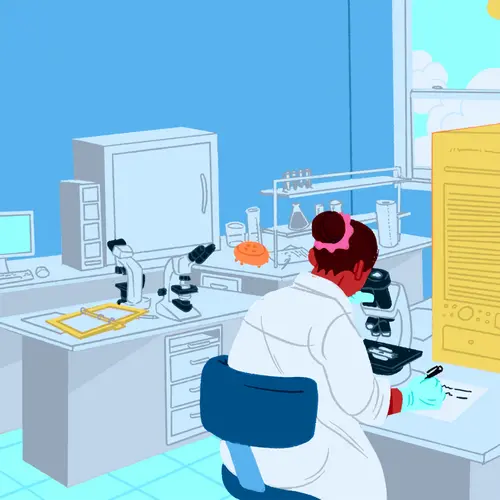A biopsy takes tissue from your body to test it for cancer and other diseases. The procedure can also reveal important information about the type of disease you have and how you should treat it.
You can find certain types of cancer without a biopsy. There are a few different ways to do this, depending on the type of cancer you have and how much it has grown.
You may have certain symptoms: You could have a bad cough if you have lung cancer or pee blood if you have bladder cancer. Your doctor may be able to find a mass in your breast, belly, or prostate by examining you.
Doctors have other tools to help them decide if you have cancer. Two of the most common ones are:
- Biomarkers: Substances in your blood that could mean cancer
- Imaging: Pictures of the inside of your body that show lumps or growths
Cancer Biomarkers
Biomarkers appear in your blood for different types of cancer. These are things that the cancer cells make or that show up in the body in response to the disease.
They may be nothing more than raised levels of certain proteins, or they could be changes in genetic material. Some markers suggest just one type of cancer, while others point to multiple types.
Prostate cancer, for example, has a marker known as PSA. Higher levels of PSA in the blood (anything over 4.0 ng/mL) could be a sign of the condition. But you could have high levels of PSA and still not have the disease. For example, prostatitis or benign prostatic hypertrophy could also raise your PSA.
But the only way to know for sure if you have prostate cancer is to take a sample of cells from your prostate gland and look at them under a microscope. If it is cancer, there’s information about your tumor that your doctor can only get by this procedure, including:
- The grade of the cancer (how the cells look compared to normal cells)
- How fast it might grow
- Best treatment approach
Imaging Tests for Cancer
Your doctor might use imaging tests to look for unusual growths inside your body that might be cancer. These include:
- X-ray (pictures of the inside of your body)
- CT scan (multiple, computerized X-rays)
- Ultrasound (sound waves)
- MRI (pulsed radio waves in a magnetic field)
- PET scan (radioactive particles)
Still, these images can only take you so far. You may be able to see a growth. Certain things about the image might even suggest that it’s likely to be cancerous. But there are many benign (noncancerous) tumors that look very much like cancerous growths. That’s why, if your doctor suspects cancer from imaging, they will almost always follow up with a biopsy.
New Technology for Diagnosing Cancer
While a biopsy still gives the clearest and best information about a suspected cancerous tumor, scientists keep looking for new ways to diagnose cancer as accurately and as early as possible.
Proteomics studies the makeup and purpose of different types of proteins. Proteogenomics looks at the genes that make those proteins in the first place. Scientists hope to learn new information about which proteins show up in the blood with different types of cancer, as well as how your body responds to different cancer treatments.
In addition, a new technology called a “liquid biopsy” has gotten a lot of attention. This isn’t really a biopsy, but rather a deeper look into bodily fluids like blood and urine.
A liquid biopsy looks for bits of tumor material like molecules, cells, and even bits of genetic material (DNA) in these fluids. But the technology is still in the very early stages. Although it may yield new clues about different cancers, doctors still typically confirm the diagnosis with a biopsy.
Tell your doctor if you’re at risk for a certain type of cancer or if cancer runs in your family. Together you can decide whether to test for certain biomarkers or to do other testing for the disease.
